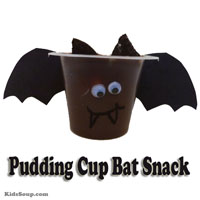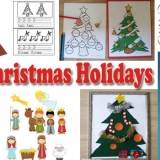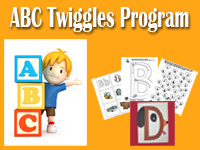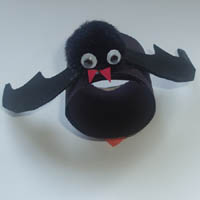
Bats Preschool Activities, Crafts, and Lessons

Bats preschool and kindergarten activities, lessons, games, and crafts. Although there really is nothing to fear about bats, and they don't really attack people to drink their blood nor are they blind, it's fun to let your imagination run wild, especially around Halloween. Read the book Stellaluna by Janell Cannon, a charming story about a fruit bat whose world is turned upside down. Let your children be batty for bats and learn about these benifical creatures with our "spookatacular" bat and Stellaluna related activities, crafts, rhymes, games, lessons, and printables.
Samples of our more than 80 bats preschool and kindergarten activities, crafts, games, and printables available in our KidsSoup Resource Library:
Crafts

Bat Napkin Ring
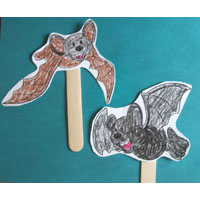
Bat Puppets
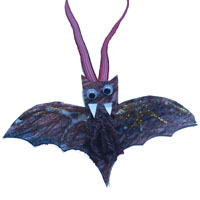
Bat Necklace
Activities and Lessons
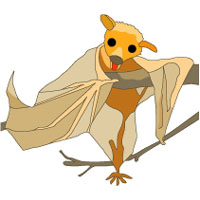
Stellaluna Story Activities
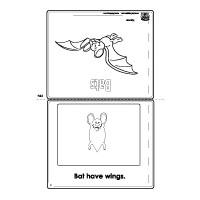
Bats Booklet
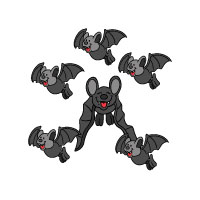
Ten Little Bats
Math
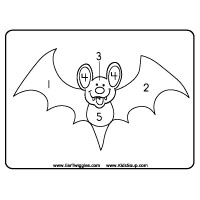
Black, Color the Numbers Game
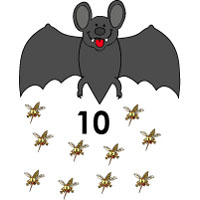
Bat Counting Game
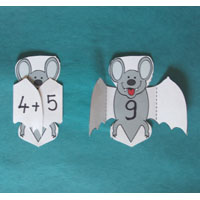
Bat Additions
Science and Exploration
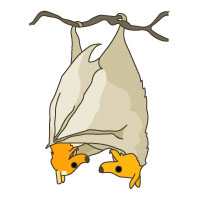
Bat Sense of Smell - Nursery
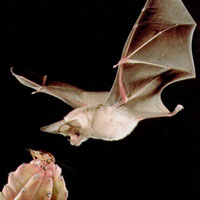
Bat Facts
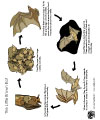
Little Brown Bat Life Cycle Color
Games
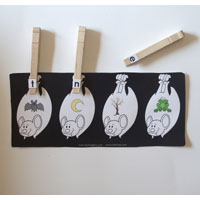
Bat Ending Sound Folder Game

"At" the Bat Word Family Folder Game
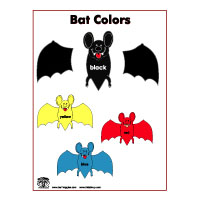
Bat Colors Folder Game
Movement
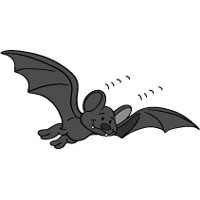
Echolocation
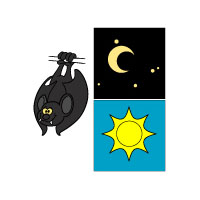
Bats at Night and Day
Booklets and Other
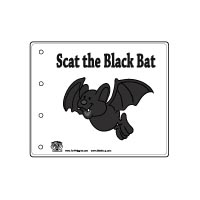
Scat the Black Bat Story Book
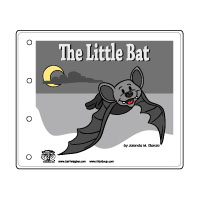
The Little Bat Story Book
Worksheets

Little Brown Bat Life Cycle Color
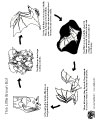
Little Brown Bat Life Cycle b/w
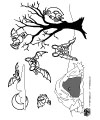
Bat Cave Coloring Page
Twiggle Books
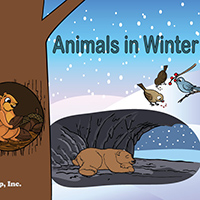
Animals in Winter Twiggle Book
Free Bat Crafts, Bat Preschool Curriculum Activities, and Printables
Bats often get a bad rap. They are one of the most misunderstood animals on the planet. Did you know that bats are quite beneficial to us? They eat harmful bugs like grasshoppers and mosquitoes which can destroy crops and spread diseases. They help spread fruit seeds and pollinate flowers. Even their poop, or guano, is beneficial as it makes an excellent fertilizer. Your child will enjoy learning about bats through listening to stories, making fun crafts, playing games, and reciting poems.
Bats Learning Centers
Bat Caves
Using large cardboard boxes or tables and blankets, make a bat cave. Cover a table with a brown or black sheet or fabric. Let children pretend to be bats sleeping in the cave by lying on their backs with their feet touching the bottom of the table. Distribute some plastic fruits and plastic bugs around the cave for the bats to find. Let your child use it for dramatic play or for reading books about bats.
Cave Bat Counting (Small Group)
Place 10 bats into a brown paper bag "bat" cave). Let a child pick a random bat card and name the number. Then, reach inside the cave to grab the matching amount of bats.

Preschool Activities:
Extension: Let children match the bats with the matching number of bugs/mosquitos.
Bats Felt Story Activity and Story Book (Book, activity, and printables available inside our KidsSoup Resource Library)
 Preschool Activities: |
 Preschool Activities: |
Scat the Bat was a black bat. Everyone in his family was black. But Scat the Bat was tired of being like everyone else. So he said, (snap fingers) “I’m Scat the Bat. I’m sassy and fat. I can change my colors, just like that.” So Scat the Bat changed into a green bat. (Activity and printables available inside our KidsSoup Resource Library)
Bat Number Line (Activity and printables available inside our KidsSoup Resource Library)
Draw and cut out 10-20 bat shapes out of black craft paper and label with the numbers 1-20. Attach a string between two chairs and let children hang the bats with clothespins in the order from 1-10 or 1-20.

Preschool Activities:
-at Word Family Bats Activity and Game (Activity and printables available inside our KidsSoup Resource Library)
Bat, cat, hat... Take the opportunity to practice the -at word family with your children.

Preschool Activities:
View also our Bat Twiggle Magazine edition for more free bat crafts, activities, recipes, and games.
Twenty Questions
Place a toy bat inside a paper sack. Explain to your child that he/she is allowed to ask twenty questions to decide what is inside the sack. Record the number of questions asked by placing tally marks on a piece of paper. When all twenty questions have been asked, ask, "What do you think is in my sack?" By the process of elimination, your child hopefully will be able to solve what is the bag. If not, follow-up with a discussion of what questions would have given him/her more helpful information.
Ask children, "Are you afraid of bats? Graph the answers.
Bat Hearing and Echolocation Science Activity
Discuss with children that bats use their sense of hearing to help them find food. A bat can tell where an object or animal is by making clicking sounds that bounce back from the object resulting in an echo (echolocation). They can even tell the size and shape of a tiny insect from its echo. Their ears are very sensitive and this helps the bat fly in darkness without hitting anything.
Circle Game
Choose one child to be the bat and cover his/her eyes with a bandana. Choose one or two children to be the insects making clicking sounds with their mouths. One child makes the clicking sounds. The bat follows the sound until he/she touches the child making the sound. Continue with the second child. Continue until everyone has a chance to be the bat.
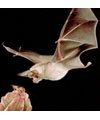 |
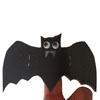 |
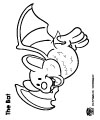 |
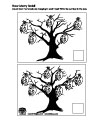 |
|
|
Bat Coloring Page
|
Bats Counting Worksheet
|
Bat Craft - Finger Puppet
Bats are familiar figures when the leaves start to turn and Halloween is just around the corner. Your child will enjoy learning about bats by making this fun bat craft and singing the bat song.

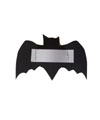
What you need:
Bat printouts
White pencil
Black construction paper
Wiggly eyes
Stapler
Scissors
What you do:
Print bat pattern on heavy printing paper and cut out.
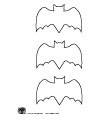
Let children color it or use a white pencil to trace the bat shape onto black construction paper and cut out. Cut a strip of craft paper and staple one end to the back of the bat. Push strip a little bit together to make a loop and staple the other end of the strip to the bat (see picture below). Let children slide a finger through the loop to play with their bat puppets. Sing the following song: together:
Bats Are Sleeping
(Tune: Frere Jacques)
Bats are sleeping, bats are sleeping,
Upside down, upside down.
Sleeping in the morning.
Waiting for the night to come.
To fly around, to fly around.
Bat at Night Artwork
Draw a flying bat shape on a piece of cardboard and cut out. Place the shape on a black craft paper. Provide children with a small strainer, white paint, and a toothbrush. Hold the strainer upside down over the bat shape. Demonstrate to children how to dip the toothbrush in to the white paint and then brush it on the strainer until the black paper is covered with white speckles.
Clothespin Bats
Cut a bat shape out of black foam or craft paer. Let children glue on googly eyes, and then glue on to a clothespin.
The Bat Stellaluna Activities
Stellaluna Stellaluna by Janell Cannon is a charming story about a fruit bat whose world is turned upside down. After reading the story to your child, discuss with your child how birds and bats are different and what it means to be a friend.
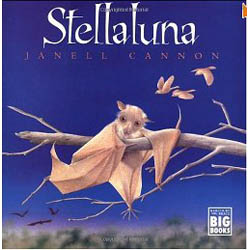
Book: Stellaluna
Stellaluna Story Time Activity
Show pictures of a bat and a bird. Ask children to decide whether or not a bat is a bird. Give them small slips of paper to write either "yes" or "no” or take a count. Make a chart with a nest on it. The "yes's" go on the nest. The "no's" go outside the nest. Show children the front cover of the book Stellaluna by Janell Cannon. Have children make predictions about the story. Write children’s predictions on chart paper. Read the story Stellauna aloud to children. After reading the story ask children again to decide whether or not a bat is a bird. Take a count and compare to the count taken prior to reading the book. Make a K-W-L chart with the following headings: What We Know about Bats, What We Want to Learn about Bats, and What We Learned about Bats.
Stellaluna provides a great springboard for a discussion about what it means to be different and alike. (Lesson available inside our KidsSoup Resource Library)
Bat Snack: Bat Chips
Using a bat shaped cookie cutter, cut flour tortillas into bat shapes. Lightly brush both sides of each bat shape with oil. Place tortilla shapes on cookie sheet and place in oven. Broil, flipping chips once when they begin to brown. When brown on both sides, sprinkle lightly with salt or a mixture of cinnamon and sugar.
Bat Facts
• Bats are the only flying mammals.
• Bats give birth to live babies and feed them with milk.
• Bats like people usually give birth to only one bat at a time.
• Bats are nocturnal. They feed at night and sleep during the day in caves or in trees. The place where a bat sleeps is called a “roost.”
• Bats are found on all continents except Antarctica.
• There are close to 1000 species of bats.
• Bat wings are made of thin layers of skin stretched over their arms and fingers.
• Bats have a thumb and four fingers, just like people.
• Bat fingers are very long. In fact, if we were like bats, our fingers would be longer than our legs.
• All bats live upside down.
• Different bats eat different things: fruit, insects, fish, frogs, and small animals.
• The Vampire Bat makes small wounds in large animals with its razor-sharp teeth and then licks the blood.
• Bats have good eyesight, but they hunt at night, so instead of relying on their sense of sight for night=time vision, they make high-pitched squeaks called “ultrasounds.” (These sounds are too high for most people to hear.) If these sounds hit something, they bounce back. The bat hears the echo and can tell where the object is. This is called “echolocation.”
• Bats often have huge ears compared to the rest their body—they have the best hearing of all mammals.
• The smallest bat—the bumblebee bat—is about the size of a jellybean and weighs less than a penny.
• The Bismarck flying fox has a wingspan as long as a man.
• Bats benefit people in many ways. Some feed on harmful insects while others pollinate flowers as they fly from flower to flower. Seeds are dropped by fruit bats which may sprout into plants.
A Batty Poem
Arizona Game and Fish Department, WILD Kids, Number 15
Bats are mammals
like you and me
Some live in caves
and some live in trees.
Bats are nocturnal
they are active at night.
No bats are blind,
some have good sight.
They use echolocation
to find insects they eat.
They can fly at 60 miles per hour
and at 10,000 feet!
When the weather turns cold
and there's no food to eat
Some bats migrate or hibernate in a
deep sleep.
Some bats are pollinators
and some eat fruit.
Just look at their noses or ears,
they are adapted to suit.
So, don't be afraid
next time you see a bat.
They are part of nature
and belong just where they're at.
Learn More about Bats:
You've Got Bats
The maps that appear in the right margin of this resource highlight the range of different species of North American bats.
Our Products
Education - This is a contributing Drupal Theme
Design by WeebPal.
Design by WeebPal.


